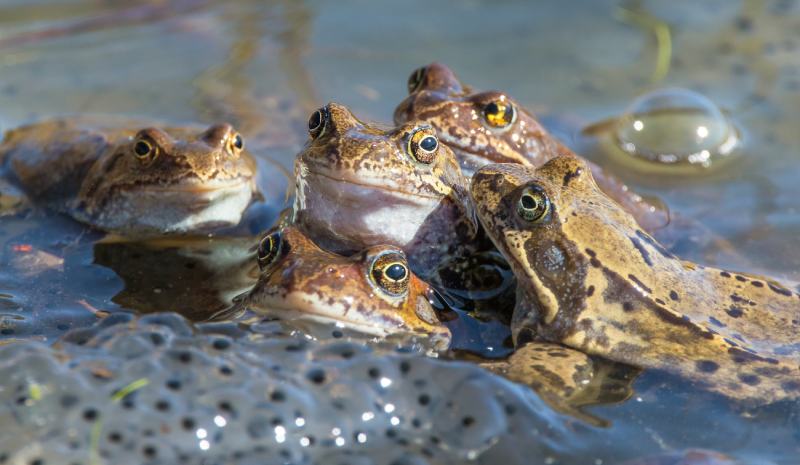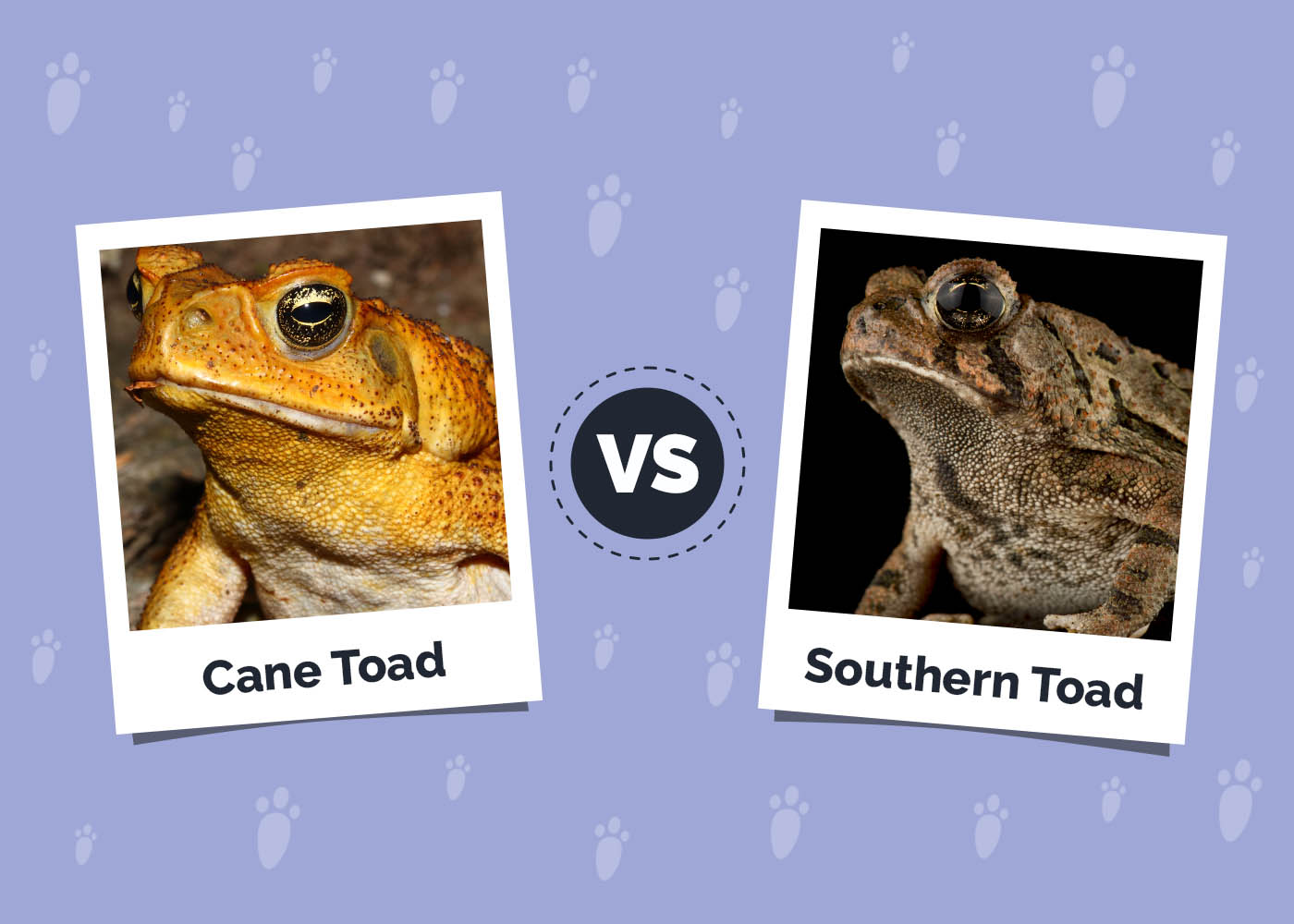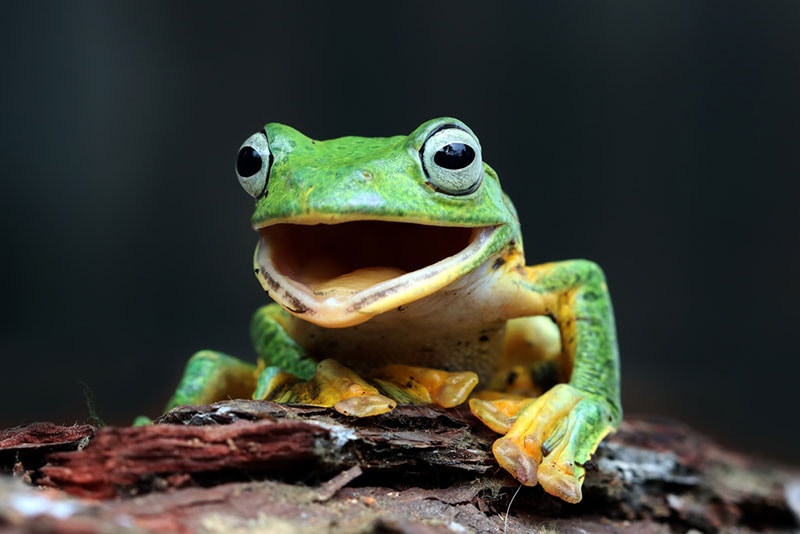25 Fascinating Frog Facts (With Pictures)
Updated on
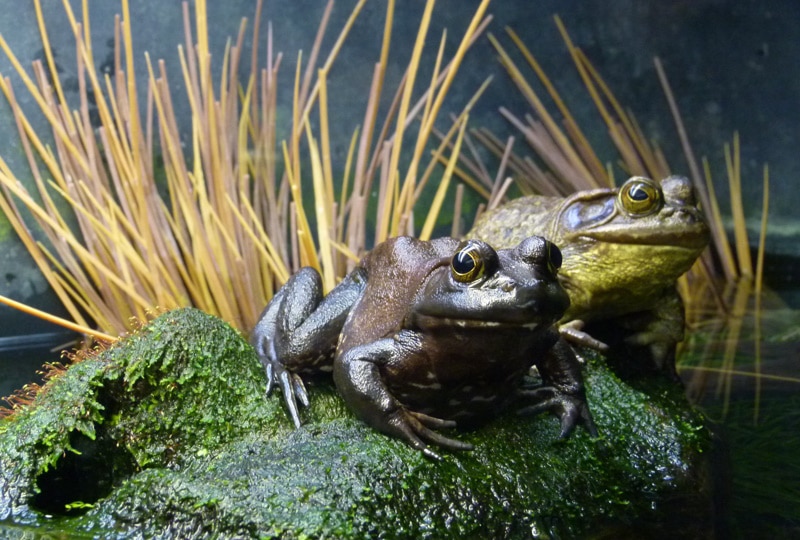
You either love frogs or you hate them. Some people are captivated by them—there certainly are some stunning specimens out there. But for others, the mere mention of a frog in the vicinity is enough to cause them to levitate in terror. They are intricately intertwined in human history and culture, being significantly symbolic in many belief systems. Whatever your particular stance may be, from a biological standpoint, there’s no denying that frogs are intriguing amphibians.
Unless you’re an amateur or even an expert herpetologist, it’s unlikely that you would have given them much more than a second thought. It may surprise you to know that there is so much more to frogs than just warts and fairytales. Keep reading and you are sure to see our dewy-skinned little croakers in a whole new light.
The 25 Fascinating Frog Facts
We’ve compiled this list of 25 facts about frogs, some of which are sure to get your eyebrows raised. Let’s learn a little about our amphibious buddies.
1. Frogs and Toads Are Mostly the Same, But Slightly Different
Taxonomically speaking, frogs and toads are somewhat similar. They are amphibians that both belong to the order Anura. They bear a strong general morphological resemblance to one another and share a number of physiological and life history similarities. There are, however, some marked differences between them.
The main difference between the two is in the shape of their pupils and the presence of a parotid gland. Frogs have vertical pupils, whereas true toads have horizontal pupils. In addition, true toads have parotid glands on the sides of their heads, but frogs do not have these.
Toads have rougher, warty skin whilst frogs tend to have smooth, slimy skin. Frogs generally have longer legs than toads and are much better jumpers than them. With their stout bodies and shorter legs, toads are more earthbound than longer-bodied frogs.
Female frogs lay their eggs in clumps as opposed to the long strings of eggs laid by female toads. The newly hatched tadpoles differ in appearance too. Frogs’ tadpoles are longer and sleeker and sometimes vary in color, such as appearing flecked with gold, whilst toads’ tadpoles are short and usually plain black.
Some frog species have exotic colors and patterns, but the poor old toad is destined for a drab eternity of dull browns and greens. Finally, frogs spend much of their time in or near water, but toads only need to return to water to breed and often live on land primarily.

2. Frogs Are Amphibians
As mentioned, frogs are amphibians. This means they live both in water and on land. Amphibians are characterized by having an aquatic larval phase that uses gills to breathe and a partly terrestrial adult phase that breathes with lungs. Other animals classified as amphibians are newts and salamanders.
3. They Have a Vast Geographical Distribution
You will be able to find frogs on every single continent on the planet with the exception of Antarctica.
4. Every Species Has Its Own Special Call
Male frogs call, or croak, as it is commonly referred to, to attract a mate. The volume of his call determines how successful he will be in his quest. Every species has its own particular call. If you have ever spent any time in nature in the evening near a body of water, you may have been privy to a frog symphony. The beautiful and perfect din created by the croaking and chirruping chorus of a multitude of frog species can be an ear-splitting wonder to behold!
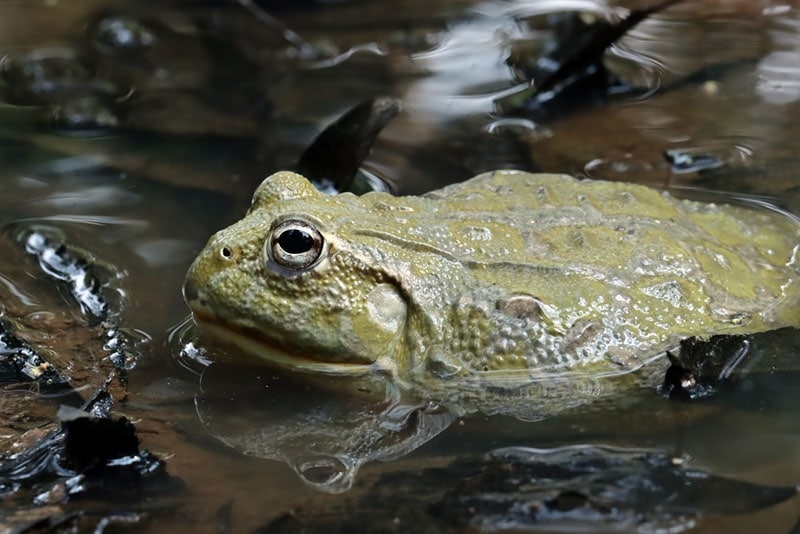
5. The Smallest Frog in the World Is the Size of a Housefly When Fully Grown
At just 0.3 inches in length, Paedophryne amauensis is the smallest frog in the world. It is roughly the size of a common housefly. Discovered in 2012, it also holds the prestigious title of the world’s smallest vertebrate. This notable honor previously belonged to an Asian fish species, Paedocypris progenetica. It’s hard to believe that a body that tiny can house a fully formed and functional skeleton.
6. The Most Poisonous Animal in the World Is a Frog
The notorious title of most poisonous animal in the world belongs to none other than an ornate-looking little frog known as Phyllobates terribilis, the golden poison frog. This stunning, bright yellow frog is small in stature measuring no more than 2 inches in length. It is endemic to rain forests of Columbia where it has, sadly, reached endangered status due to habitat destruction.
The golden poison frog contains enough neurotoxin to kill between 10 and 20 humans or two African Elephants!
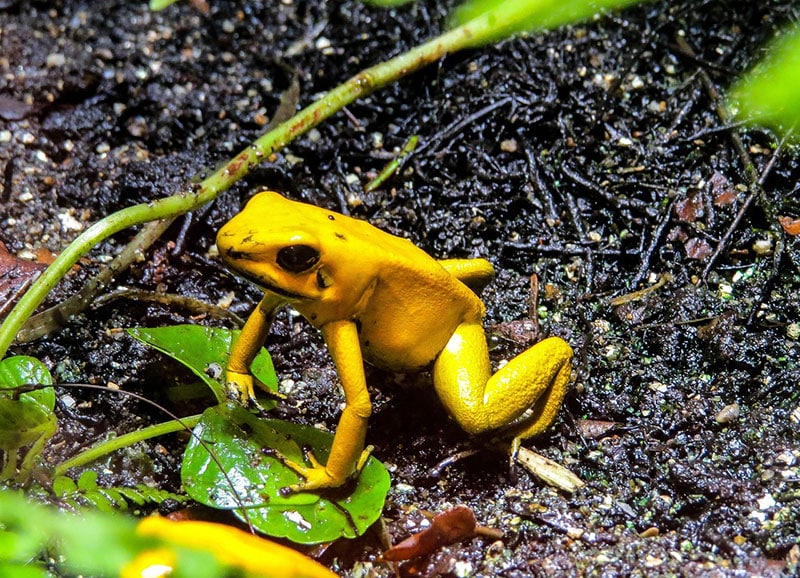
7. Frogs Have Been on Earth for 200 Million Years
There is plenty of paleontological evidence that suggests that frogs have been around for at least the last 200 million years. Some discoveries reveal that other amphibians much like frogs have been on Earth for much longer than this, closer to around 300 million years.
8. In Captivity, a Frog Can Live to Be 20 Years Old
The lifespan of wild frogs varies hugely according to the species and environment, anywhere from 1 day to 10 or more years. Realistically, the average is likely to be closer to between 2 and 6 years of age.
Frogs bred and kept in captivity may often reach the ripe old age of 20 years.
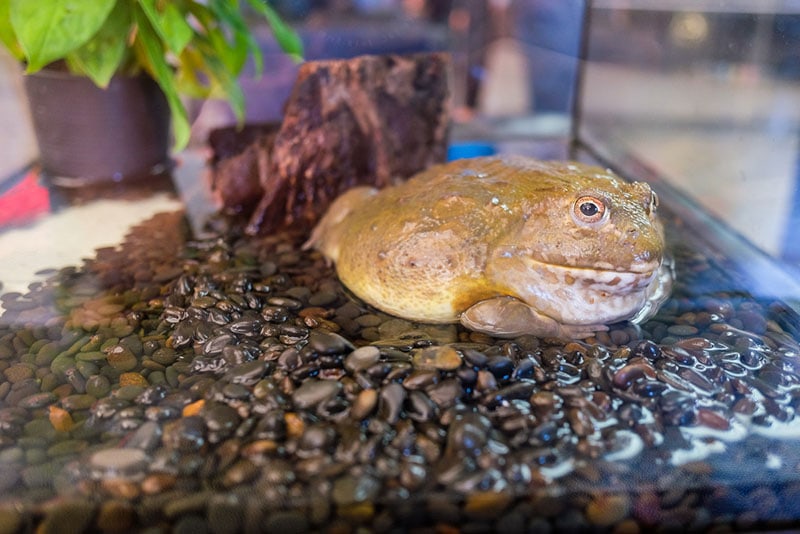
9. A Group of Frogs Is Called an Army
We are in love with the fact that a group of frogs is called an army! We can’t help but picture rows of stout green frogs lined up and marching off with their army helmets and rifles slung over their “shoulders.”
OK, so our imaginations may have gotten away from us. More likely is that they were assigned this collective noun simply because of the way they congregate en masse, as is the inclination of many species. Their often-green coloring and the way in which they arrange themselves give the appearance of a military-style arrangement.
10. There Are 7,623 Species of Frogs (and Toads)
According to AmphibiaWeb,1 as of May 2023, there are 7,623 species of frogs and toads belonging to the amphibian class of vertebrates. This number represents almost 90% of all amphibians and new species are continually discovered each year. Since 1985, the number of known species of amphibians has increased by a whopping 60%. This makes you wonder about the countless undiscovered froggies still out there!
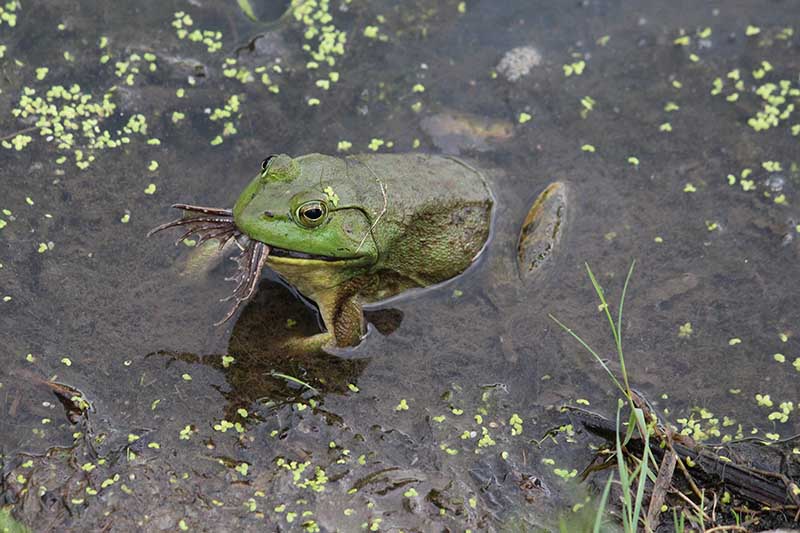
11. The Largest Frog Is the Goliath Frog
The largest frog in the world is the very appropriately named goliath frog or bullfrog, or the giant slippery frog. It hails from West Africa where it inhabits rainforests, primarily near waterfalls in Equatorial Guinea and Cameroon. It preys nocturnally on small vertebrates and crustaceans along the river margins.
It can reach up to 13 inches in length from nose to rump and weigh up to 7.2 pounds. There are breeds of dogs that are smaller than this frog!
12. Frogs Are an “Indicator Species”
Frogs can give scientists a good indication of ecosystem health and functioning. They are very sensitive to environmental changes, and this may be reflected in a change in their behavior or decline in numbers. Because they are both prey and predator, they have a direct effect on other species within an ecosystem.
Factors that can affect the condition of an ecosystem include pollution, climate change, habitat loss, and human activity.
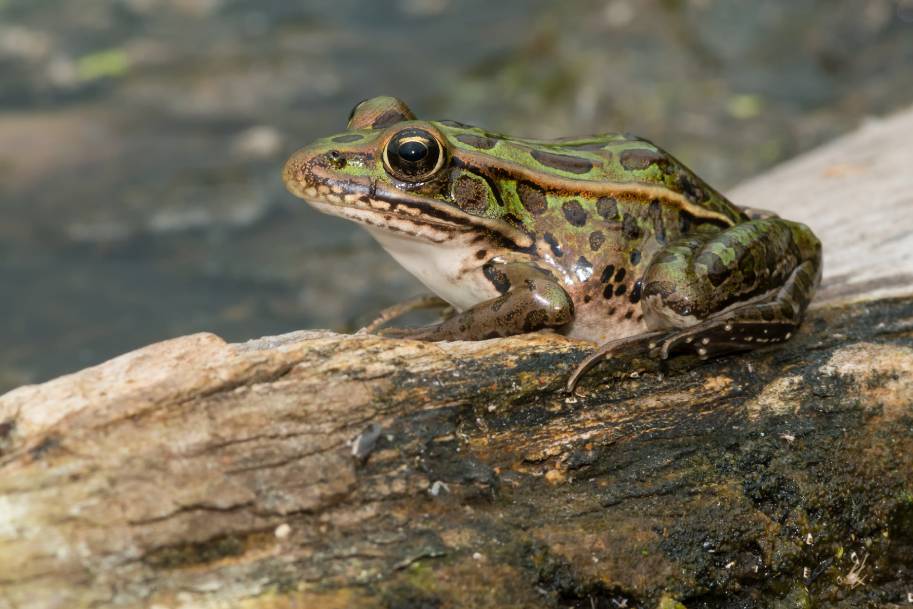
13. They Have Teeth!
Don’t interfere with a wild frog as you might be liable to receive a toothy nip if it decides to defend itself. Frogs have small teeth on the roof of their mouth which assist in the retention of prey. The teeth don’t play a role in catching prey or chewing it but rather assist in its one-way passage down the throat. The teeth face in such a way that prevents food from moving in any direction but towards the stomach.
14. They Fertilize Their Eggs Externally
Amphibian eggs are externally fertilized, except in very few cases. Either the male will sit on top of the female and hold her in place so he can fertilize her eggs as she releases them, or the female will release her eggs into the water after which the male releases his sperm into the water where fertilization takes place.
The number of eggs that a female lays per cluster, as well as the number of clusters per year, varies considerably between species. Anywhere between 50 to many thousands of eggs per cluster is normal with between two and 20 clusters per year, again, depending on the species.
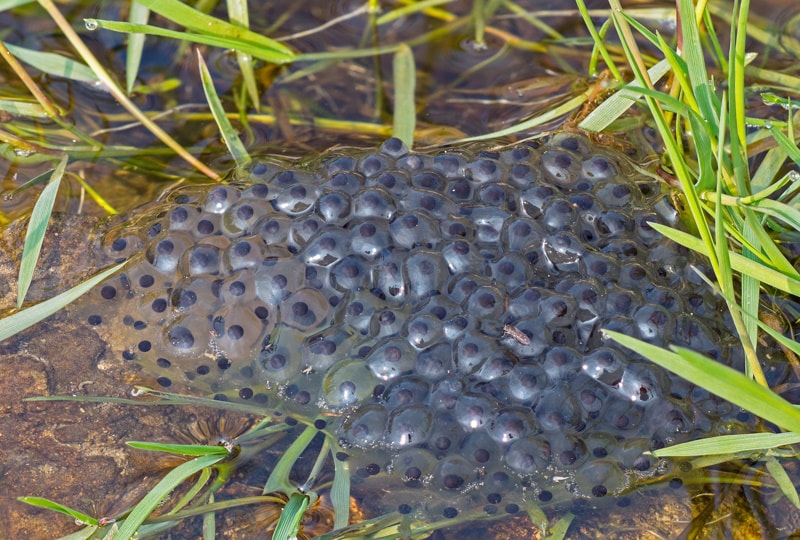
15. Frogs Are Cold-Blooded
All amphibians, including frogs, are cold-blooded. This means they lack the ability to self-regulate their body temperature. They are reliant on the environment for warming them up or cooling them down. They will hibernate when the ambient temperatures get too low and will even enter a state of prolonged torpor during extreme weather events such as when it becomes too hot, dry, or cold.
16. They Have Excellent Night Vision
Due to their nocturnal or crepuscular habits, most frogs have exceptional night vision which is very sensitive to movement. Their large, bulging eyes also give them an almost 270o range of vision and even partial rear vision.
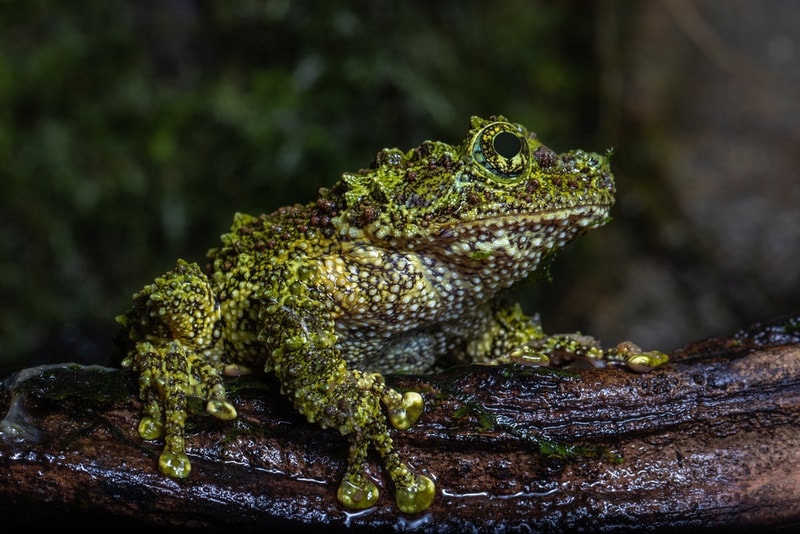
17. They Were the First Land Animals With Vocal Cords
It is widely regarded that frogs were the first land animals to have vocal cords. Male frogs have vocal sacs that fill with air and reverberate the sounds emanating from their larynx, amplifying them.
18. Bullfrogs Can Be Heard up to a Mile Away
In some species of frogs, such as certain bullfrogs, these vocal sac resonations are so loud that they carry for up to a mile. They are low-pitched calls that sound almost like a bull (of the bovine variety) roaring. This phenomenon is what gave them their name.
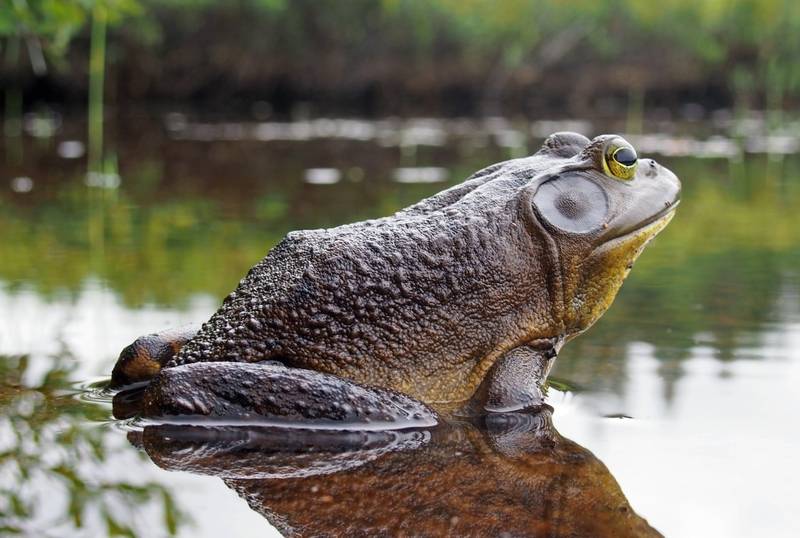
19. Frogs Don’t Need to Drink Water
Frogs do not need to drink water, as they absorb all the water they require to carry out metabolic processes through their skin.
20. Their Eyes Help Them Swallow Their Food
This fascinating fact is an odd one indeed. Did you know that frogs’ eyes play a role in the ingestion of their food? When a frog captures its prey, it pulls its eyes down into the roof of its mouth where they assist in pushing its prey down the throat. It may seem too ludicrous to be true, but nevertheless, it is also the reason why frogs can’t eat with their eyes open.
21. The South African Sharp-Nosed Frog Is the Longest Jumper
An athletic amphibian from South Africa is the frog-jump world record holder. The South African sharp-nosed frog was recorded as jumping 44 times its body length. This equates to a 130-inch jump by this nimble 3-inch frog. In human terms, this would be like a 6-foot-tall man jumping the length of a 24-story building if it was laid on its side!

22. Not All Frogs Can Jump
Having just read about the froggy long-jump record holder, it may interest you to discover that not all frogs can jump. Some shorter-legged species only walk, hop, or crawl.
23. Some Frog Species Are Able to Freeze Almost Completely in Winter
We previously made mention of frogs being able to enter torpor for extended periods of time. Some species, such as the wood frog and certain tree frogs, take this to the extreme. They can allow up to 65% of their body to freeze during particularly cold winters. During this time, their hearts slow down and eventually stop. It is not known what signals them to begin beating again once temperatures again become hospitable.
The way they prevent severely cold temperatures from completely destroying their cells is by converting glycogen in the liver into glucose. The glucose is continually circulated to the tissues and prevents complete dehydration and death.
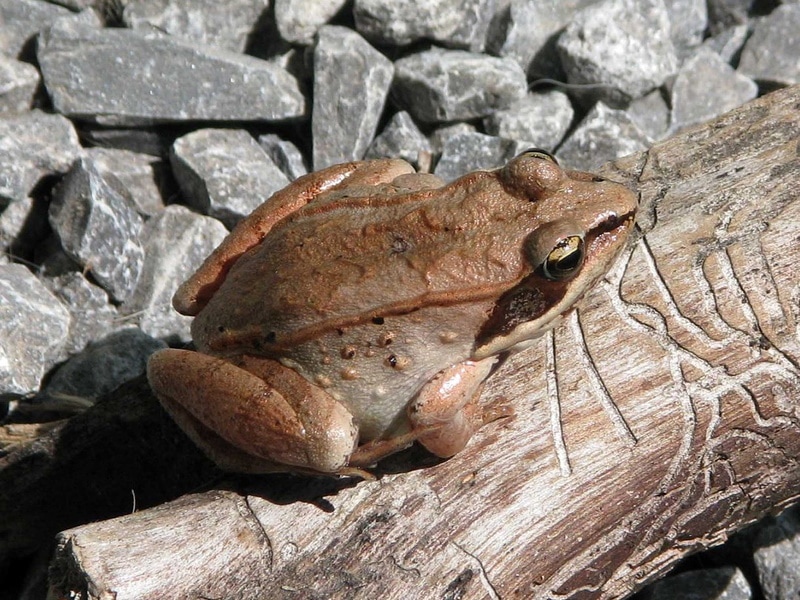
24. One Species of Frog Can Hibernate for up to 5 Years
Still on the subject of extreme torpor, an Australian frog species known as the water-holding frog is able to hibernate for up to 5 years. This phenomenon is known as aestivation, and during this time, the frog neither eats nor drinks. Ranoidea platycephala buries itself in the ground inside a self-secreted waterproof mucus casing in response to drought conditions. It will only emerge to breed once it has rained.
25. Glass Frogs Can Make Themselves Almost Transparent
Finally, meet the invisible frog! Well, not quite, but the glass frog is able to make itself almost transparent. It does this by storing as much as 90% of its red blood cells in its liver, leaving the rest of its body with an eerie translucent appearance. This is a cunning evolutionary adaptation that helps the glass frog avoid predation.

Conclusion
With species numbers in the 7,000s and new species being discovered all the time, it’s high time we treat our fascinating frogs with more consideration and awe. After all, unless you’re off on an Antarctic expedition, there’s no place on Earth where you won’t encounter an amazing frog of some kind.
We hope that after reading this article you will view these fantastic amphibians in a new light, and maybe even share some froggy tales with your friends and family!
See Also:
Featured Image Credit: Piqsels

